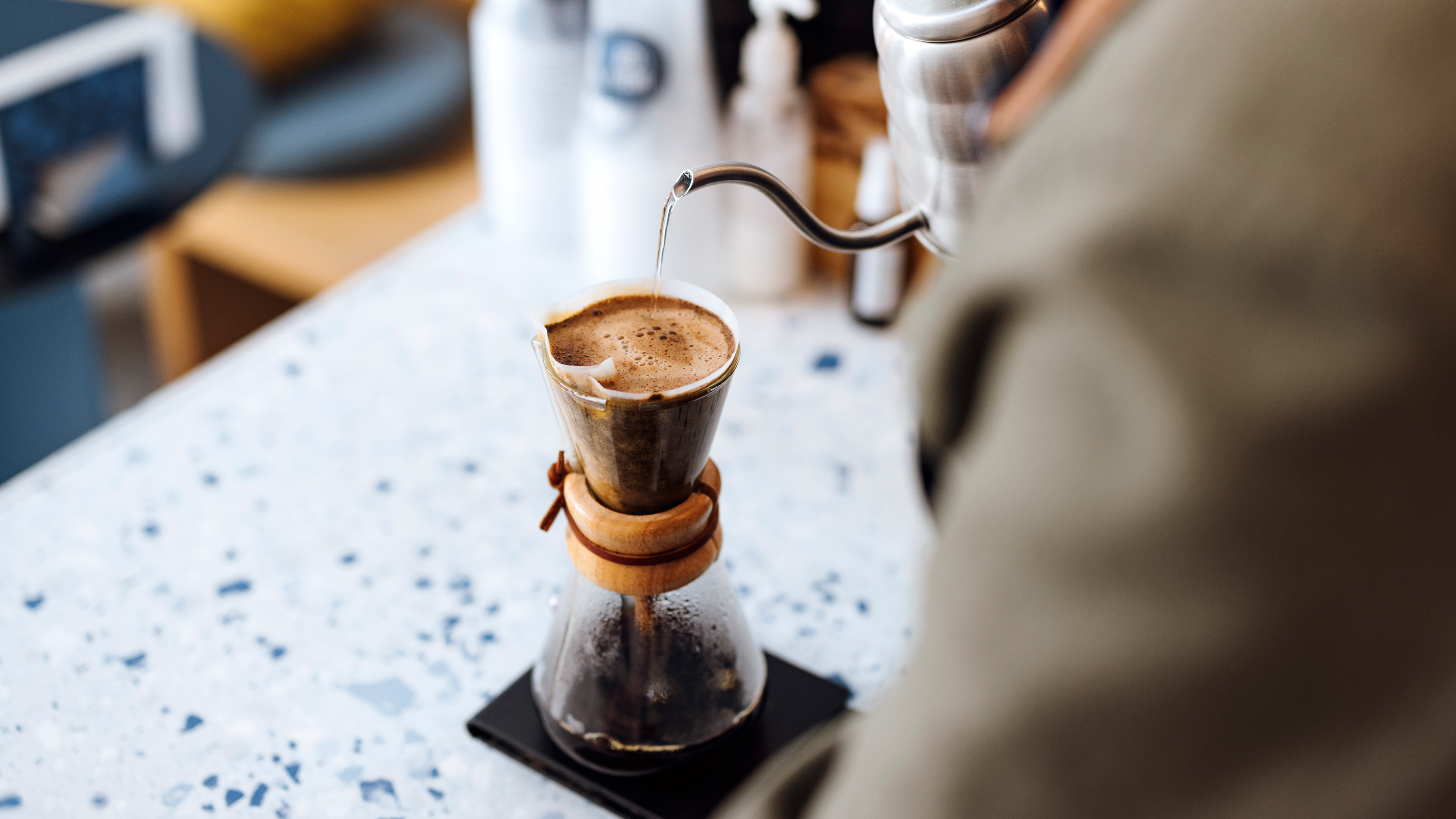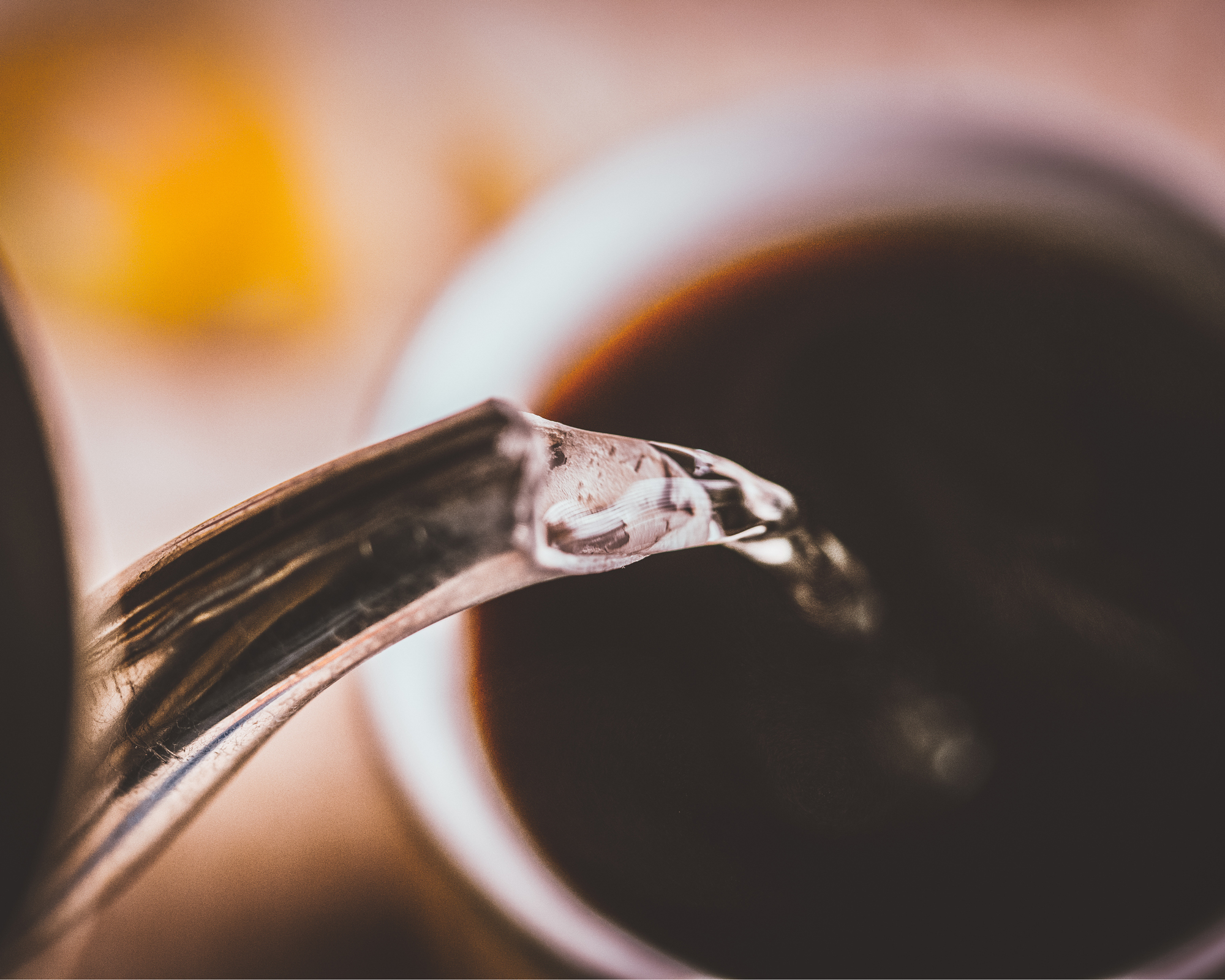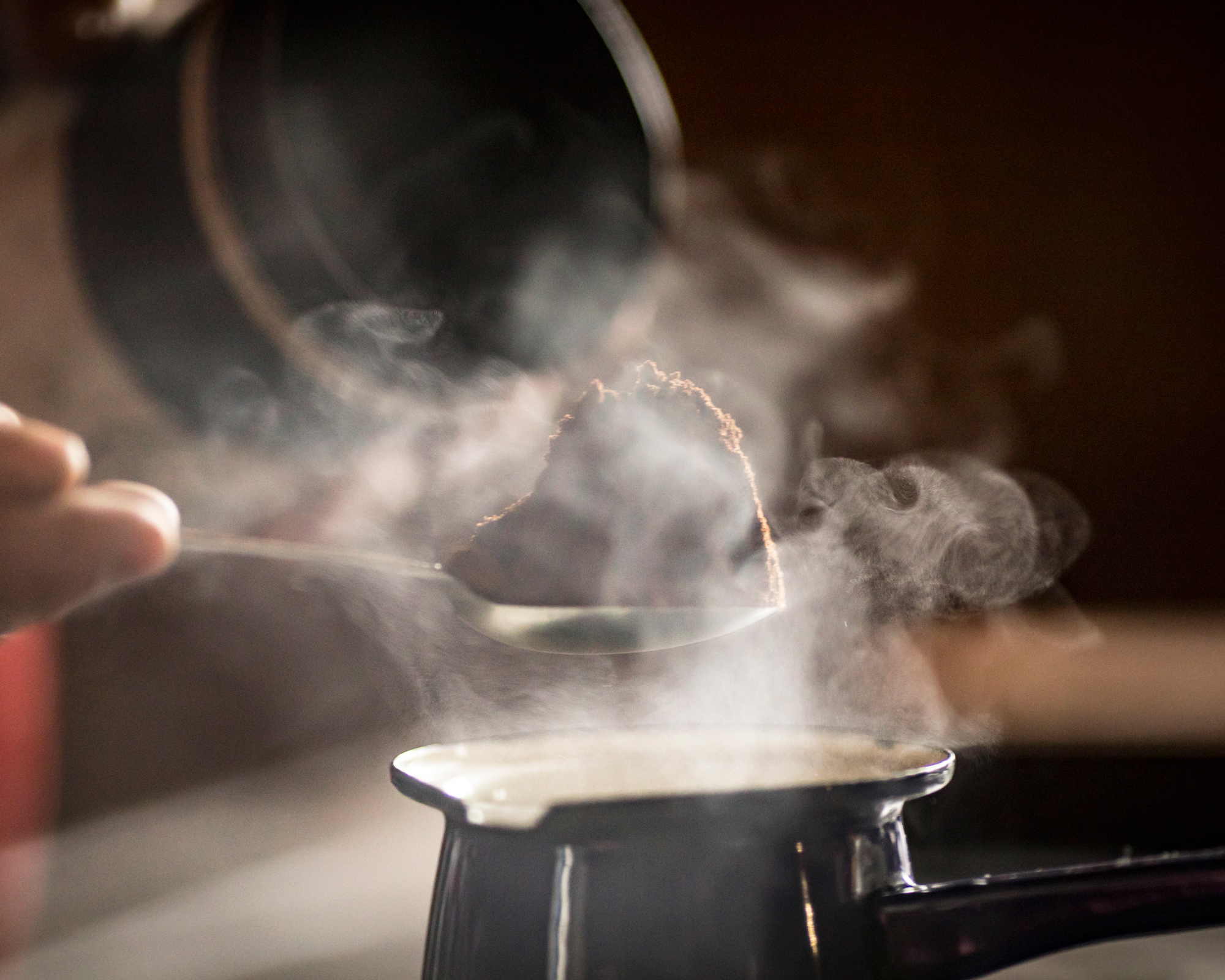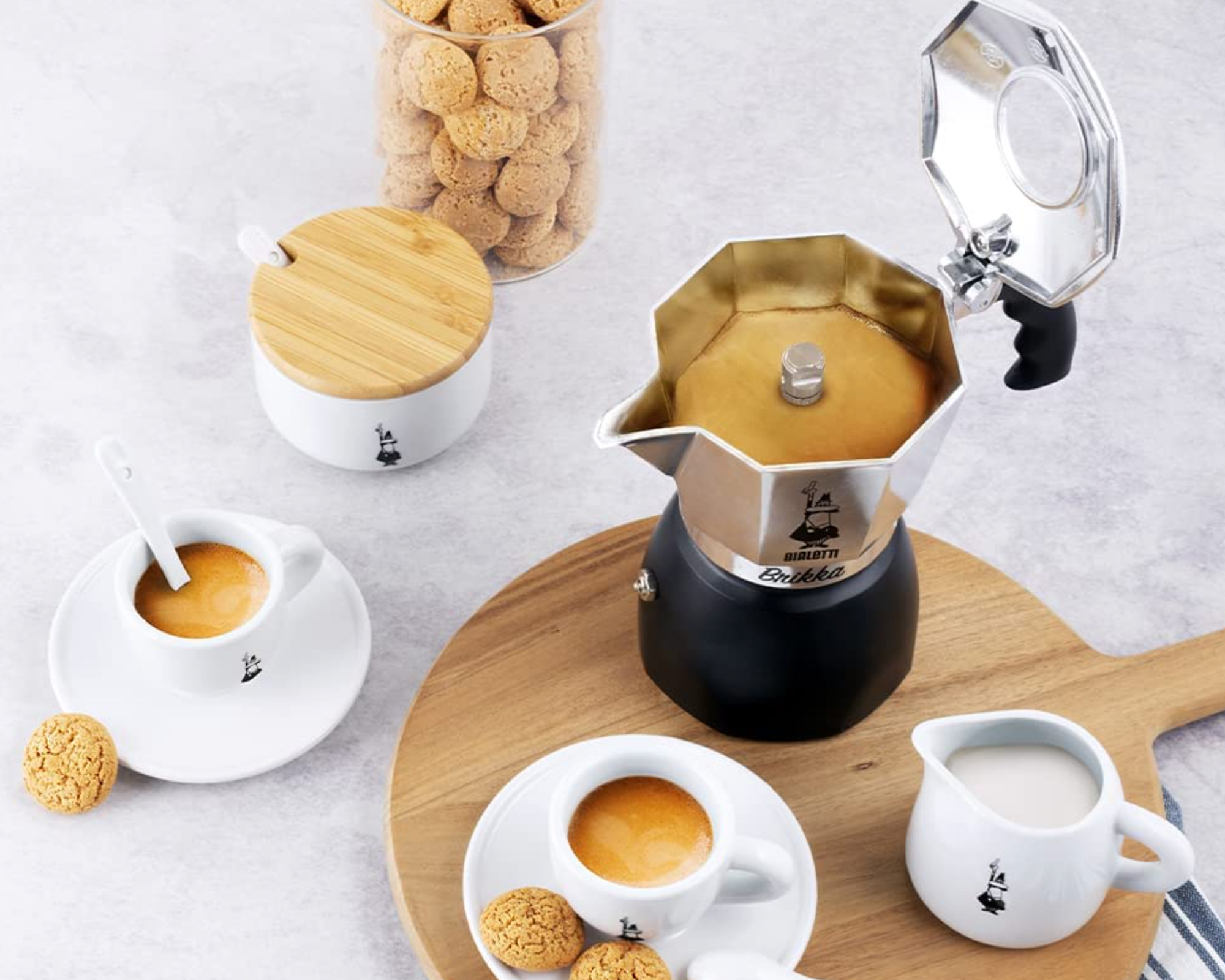How to make coffee without a coffee maker – 8 tried and tested methods
Don't have a coffee machine? Learn how to make coffee without a coffee maker – you might be surprised by how easy it is


Christina Chrysostomou
Need to know how to make coffee without a coffee maker? Coffee lovers, we feel your pain. If you're a regular coffee drinker, going without is simply not an option (hello, withdrawal headache). Fortunately, learning how to make coffee without a machine is easy – all you need is coffee, hot water, and some kind of a vessel (we will discuss in detail which ones work better).
Even the best small coffee maker might be too big for your small kitchen — or maybe yours is ready for an upgrade? Perhaps you’re away from home, and the kitchen there isn’t equipped with a filter coffee maker like you're used to. It could be that you’re in the great outdoors without an electrical connection to help you brew up. Either way, all is definitely not lost, and we are here to help. It is perfectly possible to brew a great coffee without a coffee maker, and you might even find you prefer your coffee made this way.
You’ll likely have the equipment you need for these easy methods available already, so don’t panic at your coffee machine-less state. Simply scroll down to check out our great hacks and get your brew on the go.
How to make coffee without a coffee maker
1. Make coffee on the stove (or even the campfire)

Got a saucepan? Got coffee? Then you’re all set for making coffee on the stove. Add around 6 ounces of water per serving of coffee to the pan, and set it over the heat on the stove. Bring the water to the boil, and once it’s there, add one to two tablespoons of coffee per serving, adjusting to suit your taste in coffee strength.
Next, take the pan off the heat, and cover it with the lid. You’ll need to let the coffee sit for around five minutes now so that the grounds settle on the bottom of the pan.
When the time’s up, pour the coffee into a cup or cups. Go carefully so you don’t add the grounds. An alternative is to ladle it out of the pan into the cup(s).
Camping? You can use this coffee-making method with a campfire as your heat source rather than the stove, and make like a cowboy.
Get small space home decor ideas, celeb inspiration, DIY tips and more, straight to your inbox!
2. Try a DIY French press

Know how to use a French press, but are stuck without one? You can improvise and get your fix with this clever hack.
To begin, add the coffee grounds to a wide cup. You’ll need around two heaped tablespoons per cup, but you may have to experiment depending on how strong you like your coffee. Boil water and let it cool for half a minute before adding just enough to cover the coffee in the cup. Wait around half a minute, then fill up the cup with water.
Let the coffee brew for around four minutes and then pour it into a second cup, aiming to retain the grounds in the first cup.
3. Make your own coffee bag
Let’s say your coffee machine has reached the end of its life in a sudden fashion and you haven’t yet replaced it. However, on the bright side, you do still have a supply of coffee filters. If that’s the case, you can create your own coffee bag and get brewing without the machine.
You’ll need to put the ground coffee into the filter paper, and we’re going to suggest a couple of heaped tablespoons per cup of coffee with the usual caveat that you might need to adjust to taste. Secure the top with string (clean, naturally, and also uncoated). Put the coffee bag into the cup and add boiling water, submerging the bag.
Leave to brew for around five minutes; you may need to leave it longer for a stronger cup of joe.
4. Improvise a pour-over
Once again, we’re going to assume you are equipped with paper coffee filters, but are without a machine for this method. If that is the case, you can fashion your own pour-over filter.
You’ll also need a tall vessel – a glass is good, but make sure it’s the heatproof sort if you’re going to use this hack. You’ll need to put the filter into the glass with the point downwards, then fold the filter over the circumference of the glass so you can suspend it over the glass. A rubber band around the glass will hold the filter in place. Use a knife to make a couple of tiny holes in the filter paper, add coffee, then pour over water that’s just off boiling point.
Make circles as you add the water to wet all the coffee and add the water in stages, so you’re pouring, waiting 30 seconds, and then adding more. Once you’ve added enough water for your cup, you’re ready to serve your coffee.
5. Use the microwave
This isn’t the most sophisticated of coffee-making methods if you’re without a coffee machine, but using your microwave is definitely worth a go if you don’t want to resort to instant (and that really doesn’t taste the same at all, does it?)
Grab your cup (which must be microwave-proof) and fill it with water and heat in the microwave until it’s not quite at boiling point. Take the cup out of the appliance and stir in a tablespoon or so of ground coffee. Leave to one side for the grounds to settle, which should take around four minutes.
And, er, that’s it. Your coffee is ready to drink. A word of warning, though: don’t drain your cup right down to the dregs if you’ve tried this hack.
6. Use your electric kettle

Does this sound a bit wrong? Maybe, but if you've got an electric kettle, you have a potential coffee maker. All you need to do is boil the water in your kettle and then pour the water over a cup with a filter inserted into it.
Now, the type of kettle you use will affect the quality of your coffee dramatically. Of course, any kettle will do, but you can actually make a very decent cup using this method if you get a gooseneck digital kettle such as the Cuisinart GK-1 (available on Amazon).
The beauty of these kettles is that they allow you to pour water very precisely over your coffee, without drowning it all at once, and without splashing the grounds all over your kitchen countertop.
The digital aspect is also important because these kettles allow you to boil the water to the exact temperature that you need for your coffee, rather than a standard 'just-boiled' that can result in a burnt taste.
7. Get a Moka pot to make an authentic espresso

Ok, this is cheating a little as it is technically a coffee maker – but did you know you can make really good espresso without an espresso machine? Despite what espresso aficionados will tell you, you can achieve a really good espresso with a crema using a Moka pot.
These are stove-top coffee pots that have an ingenious construction with a filter and produce the characteristic velvety crema as the coffee simmers. You have to use them on low heat to get the correct result, but otherwise, they're really easy to use (if a bit of a chore to clean).
8. Use a Pyrex measuring cup
Pyrex glass is a pretty good material for making coffee – it's durable and retains heat quite well, making a Pyrex measuring cup from Amazon a viable alternative to a coffee maker. Just pour the water over the coffee, no filter needed.
The grounds will naturally settle to the bottom. Wait a few minutes and carefully pour the coffee into cups. You can use a strainer to ensure no grounds get into the cups.
Can you drink ground coffee without filtering?
Yep. A filter is desirable, but not a necessity. Coffee grounds always settle to the bottom of whatever vessel you're using to make your coffee – you just need to be extra careful when pouring it out. Do this slowly and like you mean it, and you will have (mostly) grounds-free coffee in your cup.
Can I just add water to ground coffee?
Again, the answer is yes. You don't have to boil your coffee over a stove (technically, this is called Turkish coffee and is stronger than your average cup). You don't even need to prepare it in anything other than the cup you'll be drinking from.
Just pour over the hot water and wait. Just be aware that what you'll get will be pretty basic. But if you're in a rush, have no filter handy, and you really need that caffeine kick, it's perfectly acceptable.
Tips to create a barista-level coffee
We spoke to Dan Fellows, double World Coffee in Good Spirits champion, who shared his eight tips to help you elevate your coffee experience further and create a delicious coffee, every time.
- Talk to your favorite barista: 'Baristas love to talk about coffee! Obviously be mindful to avoid hassling a busy barista under pressure, but if they are available and open to it, a good conversation can provide useful insights into making great coffee. Many coffee businesses offer enthusiast and professional training courses which can be an amazing way to level up your coffee skills.'
- Learn how to de-code a coffee bag label: 'Coffee bags can be very intimidating with lots of information which you may not understand, and with no relation to what ends up in the cup. Once you understand what each of the variables means and how it impacts the cup, you can make educated decisions on which coffee to choose rather than buying blind or based on branding.
- Look at your coffee bean orgin: 'Different countries and regions have different growing conditions and so yield different flavor characteristics. If you find you always love coffee from a particular part of the world, you can explore different processes from this area to see which is your favorite.'
- Understand how your coffee is processed: 'The process of getting coffee from growing on a tree into an unroasted bean is complex. There are many ways to do this, each of which will impact the cup profile. Three processing methods you will commonly find are ‘natural' (where the coffee fruits known as coffee cherries are dried whole), ‘pulped natural' (where some of the fruit is removed before drying) and ‘washed' (where the fruit is removed to dry the beans). Very broadly speaking, naturally processed coffee have plenty of fruit character and heavier weight, pulped natural processed coffees have good sweetness and body with a little less fruit than naturals, and washed coffees are clean, vibrant and lighter bodied.'
- Discover what level of roast you prefer: 'Generally speaking, darker roasts can mask the character of the coffee you buy. My personal preference is to buy great coffee with a light or medium roast level to allow the character of the excellent coffee to shine through.'
- Be creative: 'I love to use coffee as an ingredient to make delicious drinks. I always like to add some sweetness to iced drinks and coffee cocktails. The MONIN range is the perfect way to provide balance and can add new flavors to iced coffee and coffee cocktails. Don’t be too bound by the traditional flavors to complement coffee either (vanilla, caramel, hazelnut), there are lots of interesting flavors that can pair with the right coffee to create epic drinks - my personal favorites are coconut, white chocolate and winter spice.'
- Balance is key: 'Whatever drink you are making, it is critical to balance together the ingredients. With filter coffee, you want to fine tune the sweetness, acidity and bitterness, and to balance the strength of the end result to be a great intensity. With iced drinks and coffee cocktails, you need to ensure the sweetness level is appropriate and allows each of the ingredients to be best represented.'
- Enjoy the process: 'Ultimately, a cup of coffee at home should be an enjoyable experience. Always log what you do and how you can improve the results, but don’t put too much pressure on yourself! Grab your favorite coffee, brewer and cup, sit down and enjoy a moment.'

Sarah is a freelance journalist and editor writing for websites, national newspapers, and magazines. She’s spent most of her journalistic career specialising in homes – long enough to see fridges become smart, decorating fashions embrace both minimalism and maximalism, and interiors that blur the indoor/outdoor link become a must-have. She loves testing the latest home appliances, revealing the trends in furnishings and fittings for every room, and investigating the benefits, costs and practicalities of home improvement. It's no big surprise that she likes to put what she writes about into practice, and is a serial house revamper. For Realhomes.com, Sarah reviews coffee machines and vacuum cleaners, taking them through their paces at home to give us an honest, real life review and comparison of every model.
- Christina ChrysostomouFormer acting head ecommerce editor